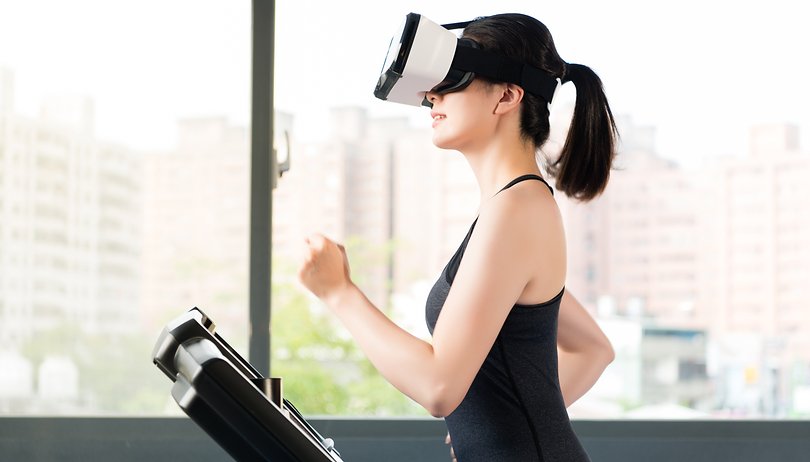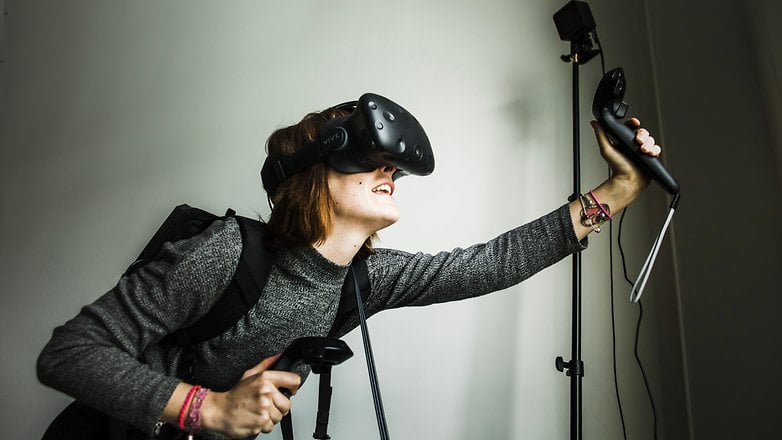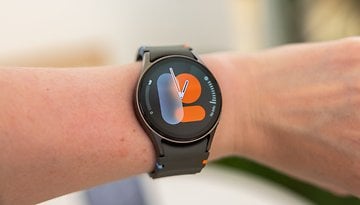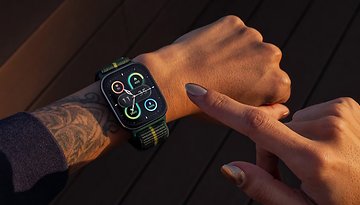How VR can help you get fit with the power of fun


We have previously discussed the multitude of uses virtual reality has, but one that rarely gets a mention is sports. Yes, despite VR being commonly associated with entertainment or gaming, it can help you break a sweat, remain active and even train without stepping foot on the field.
Often times going to the gym feels like a chore, and not just because of the physical effort, but because running on a treadmill in a small, enclosed space while staring at a gray wall is the definition of boring. Sure, you can listen to music, audio books or podcasts while you exercise, but if you lack motivation they are just a temporary distraction. This is where virtual reality comes in - it can allow you to run in virtual forests, dodge virtual bullets, give you more tangible goals to strive toward and bring out your sense of competitiveness.
You may remember how the Nintendo Wii and its motion controls kicked off a technological fitness craze back in the day, but VR takes it to the next level thanks to more immersive environments and more accurate head and body tracking.
You may also be familiar with a story we covered back in 2017, in which overweight gamer Job Stauffer credited an impressive weight loss of 22 kilograms to playing his favorite VR game, Soundboxing, for 5 months. Now, after trying it for myself, I understand how VR can be that proverbial spoonful of sugar that helps the medicine go down when it comes to exercise.

I've always struggled with having a fitness routine because I find gym environments rather off-putting. Having a lot of social activities and hobbies also means it's hard to block off regular evening sessions for the gym or organized sports. I prefer to exercise at home on my own time, but even then the repetitive movements in front of the wall or the TV are still a drag.
VR helps with the psychological as well as physical
When I started playing games like Beat Saber and Superhot VR, I was really surprised at just how physically intense they were. The game graphics and progressive difficulty keep things fun and before I knew it, hours had passed by and I had worked up quite a sweat. It doesn't necessarily work for every part of the body so it's more of a supplement to 'normal' exercise than a replacement, but thanks to VR I'm definitely more active at home than I used to be. And since it's also playing games at the same time, I'm more likely to go through it with a smile rather than a grimace.
This is backed up by academic research, that shows that the "rating of perceived exertion", or amount of effort the people thought they put out, was lower than the actual output. This means that thanks to the fun of the game environment, you're actually exercising more than you notice while playing VR games.
Our own Hans-George tried out Beat Saber for the first time and quickly ran out of breath:
VR equipment may be expensive, but if you have it, it removes some psychological barriers to exercise. Ever had trouble motivating yourself to go out for a run in cold, rainy winter months? Just slip on your headset instead and get moving in the warmth of your own living room. Your casual sports team too busy to meet as often as you want? There's a ton of sports games in VR to keep active with whenever you want. And you don't just need to directly simulate existing sports. Plenty of Reddit and Steam users have cited VR archery game Holopoint as being great for exercise, largely due to the fact that it encourages you to duck and squat to dodge enemies.
This video by YouTuber Daniel Kravtsov gives your an idea of the movement required for Holopoint:
For some people, having the right company can be a big motivational factor when it comes to getting fit. Your favorite tennis partner or other sports buddy move abroad and now you can't work out together anymore? Many VR sports can be played online with friends and social spaces in VR often integrate some simple sports games like a table tennis equivalent.
Online communities of enthusiasts are sharing knowledge, tips and encouragement to help each other realize fitness goals with the help of VR. For example, a Reddit user created custom routine including multiple games and charted his weight loss.
Hygiene is a factor you should consider - there are covers you can place on your headset to protect it from sweat. But if VR manufacturers want to get more serious about fitness equipment, headsets and controllers should become lighter, more ergonomic and wireless. The industry is already going in this direction, and setups such as the Oculus Quest, which doesn't need a connected PC or external tracking sensors, will also make VR exercise more accessible and convenient.
For those who balk at the idea of being immersed in a totally virtual world, AR can also offer a solution. While most people are still only used to using AR through their smartphone camera, the development of advanced AR goggles along the lines of the Magic Leap One, or upcoming headsets from Apple and Huawei, could allow the same kind of virtual fun to be added to exercise while still being fully aware of your real surroundings.
Many people would like to try VR, but cite the need for an expensive PC as one of the main reasons stopping them. Especially if they already sunk a lot of money into a Mac, for example. The next generation of standalone headsets will make getting into VR much easier, but for those looking to go the extra mile, the next step will be equipment than allows different kinds of body movement to be tracked in VR.
Specialized equipment for VR fitness fanatics
The typical hand controller setup for VR can be limiting for some fitness fanatics, but more specialized hardware exists - for example, the VirZoom platform, which is compatible with HTC Vive, Oculus Rift and PlayStation VR. This platform allows the user to pedal on an exercise back at home while visualizing themselves in a racecar, Tron-type motorcycle or on the back of a dragon. Fitbit has also partnered with VirZoom so that the smartbands can measure time, distance traveled, calories burned, heart rate data and more for the VR cyclist. VirZoom has also announced a partnership with Life Fitness, the world leader in sports equipment, distributing kits to sports halls around the world.
Another exiting company in the VR fitness arena is Black Box VR. Black Box eschews the traditional gamepad-like controller for 'hands-free' controls combined with weightlifting equipment that allow you to do more varied movements and exercises within their specialized virtual gym.
Real life pulleys and weights give the same exercise as on specialized gym equipment, but with the added bonus on VR graphics and AI training to enhance the experience. Gamification also plays a role in motivation. As Black Box says, "Wouldn’t it be great if by playing a game you could level up yourself instead of just an on-screen character?" The startup understands that in regular exercise, the perceived rewards can often seem impossibly distant to some. By using gamification and data, it aims to provide users with more immediate and recurring gratification to keep them invested in exercise.
Even the pros are doing it
Perhaps there's not better argument for the effectiveness of VR in sports and fitness than its adoption by the professional athletes whose livelihoods depend on it. Yes, as unbelievable as it may sound, VR has been utilized incredibly effectively to help athletes train. Although most of the time they are not running around a virtual field and burning calories, they can watch and analyze plays in ways never possible before. One of the pioneers in this field is STRIVR. The company provides VR training for multiple professional fields, including sports.
Throughout the 2016 season, while still playing college football at Clemson, quarterback Deshaun Watson supplemented his on-field training with VR training. Using STRIVR’s platform, he was able to watch and study hundreds of situations and reads from practice in order to better prepare for game day. According to STRIVR, thanks to his season long preparation, Deshaun then “went 6-7 with 2 TDs en route to Clemson’s first national title since 1981.” Multiple other college football and NFL teams now use STRIVR to train to great effect.
Athletes are also getting into the VR business as a way to communicate their fitness brand to the masses, such as Floyd Mayweather with his own VR boxing trainer. As the professional sports world intersects with that of personal fitness, more and more VR/AR training experiences may be guided by avatars of your favorite athletes or fitness celebrities acting as your virtual personal trainer.
Of course, as exciting at the world of VR sports is, there are still some biological facts that stop it from being an easy cure-all for being out of shape. Many in the VR fitness community also point out important factors that conforms to conventional wisdom: exercise is all well and good, but diet is an even more critical for staying healthy and losing weight. And, until equipment along the lines of Black Box becomes more available, VR still lacks resistance training, which is important for building muscle. Cardio enthusiasts will find a lot to love in VR at the moment. Bodybuilders, not so much.
Nonetheless, if you've wanted to do more exercise but keep putting if off because it seems too dull, socially awkward or inconvenient, you may discover that VR can add that missing fun factor and stimulation that keeps you moving and motivated.
Have you tried VR for sports and exercise? What do you think about the phenomenon?
This article was written with contributions from fellow AP editor Suzana Dalul













